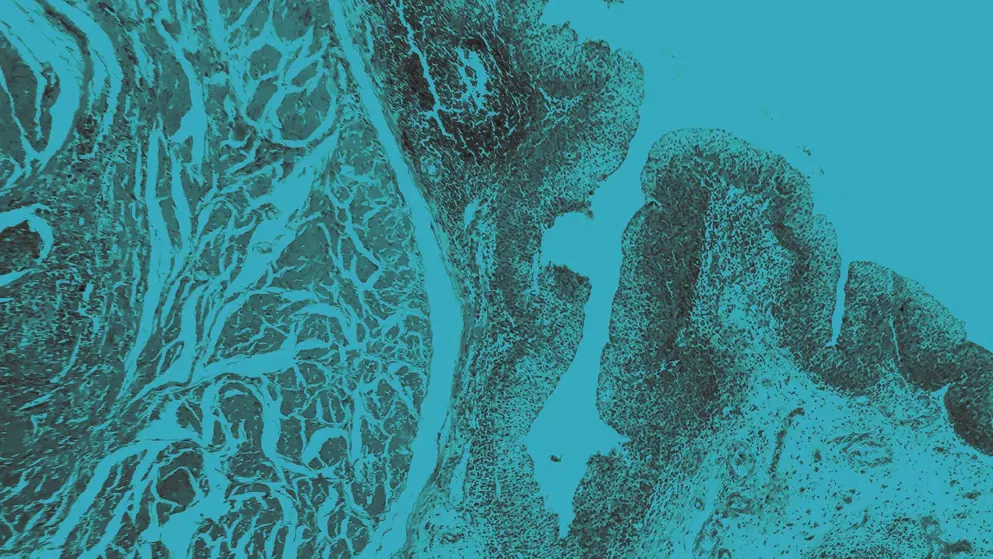
Bladder cancer
Bladder cancer arises from malignant transformation of urothelial cells lining the bladder. Symptoms often include painless hematuria, frequent urination, dysuria, and pelvic or back pain.
How is bladder cancer diagnosed?
Diagnosis typically involves cystoscopy with transurethral resection of bladder tumor (TURBT), urine cytology, and cross-sectional imaging. The tumors are characterized by depth of invasion:
- Non-muscle-invasive bladder cancer (NMIBC): Confined to the inner layers of the bladder wall
- Muscle-invasive bladder cancer (MIBC): Infiltrates the muscular wall of the bladder
What are the treatment approaches?
Treatment strategies are stage- and risk-dependent:
- NMIBC: Usually managed by TURBT, followed by immediate intravesical chemotherapy. Further treatment is risk-dependent and includes surveillance, further intravesical chemotherapy, or Bacillus Calmette–Guérin (BCG) immunotherapy. BCG-unresponsive disease may require radical treatment or clinical trial enrollment
- MIBC: Standard treatment includes neoadjuvant cisplatin-based chemotherapy followed by radical cystectomy with urinary diversion, or bladder-preserving chemoradiation in selected cases
- Advanced/metastatic disease: Options include chemotherapy, targeted therapy or immunotherapy, radiotherapy to affected areas, surgery to remove or relieve blockages, and participation in clinical trials
How prevalent is bladder cancer?
Bladder cancer is the ninth most common malignancy globally, with higher incidence in men over 55, smokers, and individuals exposed to chemicals such as aromatic amines.
What conditions can be mistaken for bladder cancer?
Initial presentation may mimic urinary tract infections or bladder calculi, which can delay diagnosis.
What factors influence treatment decisions?
In NMIBC, risk stratification (tumor grade, stage, size, multiplicity, presence of carcinoma in situ, and recurrence history) guides therapy. Bladder-preserving chemoradiation may be appropriate for carefully selected patients with localized MIBC who have undergone maximal TURBT and are either medically unfit for radical cystectomy or opt for bladder preservation.
Developed by EPG Health for Medthority, independently of any sponsor.
ASCO 2024 A high-level overview
From ASCO 2024, read Dr Ben Gallarda’s overview of ASCO’s commitment to palliative care, artificial intelligence, and coordination with organizations.
of interest
are looking at
saved
next event



